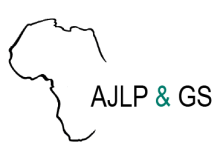Resource information
Context and backgroundIn response to national development challenges, the Government of Kenya has disseminated its development agenda through the ‘Kenya Vision 2030, which aims at creating “a globally competitive and prosperous country with a high quality of life by 2030”. Infrastructure projects are key enablers in spurring the socioeconomic development. Advocacy on the environmental, social sustainability, compensation, and restoration of wayleave acquisition for infrastructure development has been on the rise with various stakeholders involved with diverse requirements Wayleave acquisition in Kenya has been a major bottleneck to the implementation of infrastructure projects. Political interferences and activism have exacerbated the difficulties in wayleave acquisition process / right of way for the said infrastructure projects. Goal and Objectives:The study analyses the technical efficiency of the wayleave acquisition process on sampled transmission lines with various voltages and wayleave corridors sizes. This analysis will be instrumental to maximize output and on timely delivery of infrastructure projects in terms of the iron triangle parameters (scope, cost, and time) as the country seeks to transform into a middle-income country. the research analyses the efficiency of the wayleave acquisition process and the challenges faced in implementation of the resettlement action plans for transmission line projects in Kenya Methodology:The research employs Non-Parametric Data Envelopment Analysis (DEA) to assess technical efficiency of wayleave acquisition process. The research sought to maximise outputs in terms of time to realize the project (on time delivery rate) and minimize delays resulting from disruptions on right of way/ wayleave acquisition as the inputs. It further examines the input and output orientations efficiency to provide recommendation on process and policy changes.Results:The research finding show that a model is significant, and variables explains the technical efficiency of the wayleave acquisition process with an efficiency score (Theta of 1) otherwise other Decision-Making Unit (DMUs) are inefficient, depicting decreasing return to scale. Further policy interventions and recommendations have been provided to streamline the wayleave acquisition process especially under involuntary resettlement


